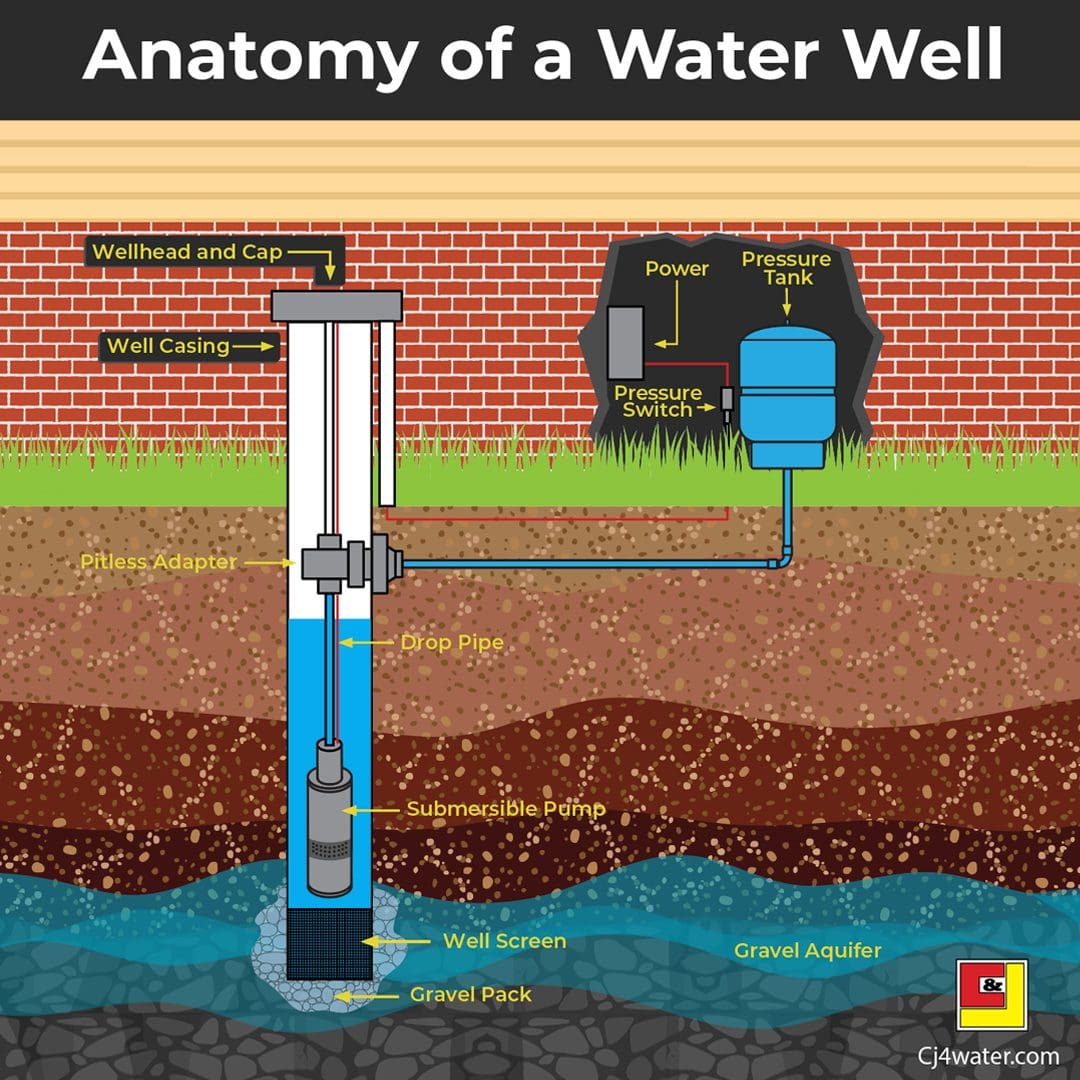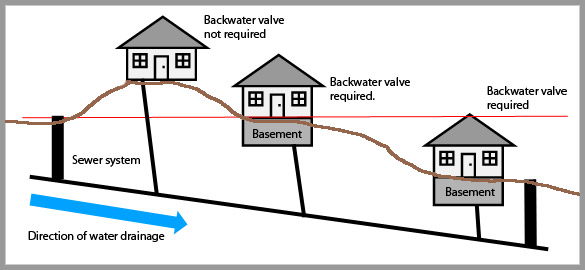Everything You Need to Know to Your Property's Plumbing System Anatomy
Everything You Need to Know to Your Property's Plumbing System Anatomy
Blog Article
This great article further down pertaining to The Inner Workings of Your Home's Plumbing is fairly fascinating. You should see for yourself.

Recognizing just how your home's pipes system functions is crucial for every single home owner. From delivering clean water for drinking, cooking, and bathing to securely getting rid of wastewater, a well-maintained pipes system is crucial for your family's health and comfort. In this extensive guide, we'll explore the intricate network that makes up your home's plumbing and offer suggestions on maintenance, upgrades, and dealing with common issues.
Introduction
Your home's plumbing system is more than just a network of pipes; it's a complex system that ensures you have accessibility to clean water and reliable wastewater elimination. Recognizing its elements and exactly how they collaborate can assist you stop expensive repair work and guarantee everything runs efficiently.
Standard Elements of a Pipes System
Pipelines and Tubing
At the heart of your pipes system are the pipelines and tubes that bring water throughout your home. These can be constructed from numerous products such as copper, PVC, or PEX, each with its advantages in terms of durability and cost-effectiveness.
Fixtures: Sinks, Toilets, Showers, etc.
Components like sinks, commodes, showers, and bath tubs are where water is utilized in your home. Understanding exactly how these fixtures connect to the plumbing system aids in detecting issues and planning upgrades.
Valves and Shut-off Factors
Shutoffs manage the flow of water in your pipes system. Shut-off shutoffs are important throughout emergency situations or when you need to make repairs, enabling you to isolate parts of the system without disrupting water circulation to the entire house.
Water System
Key Water Line
The primary water line attaches your home to the community water supply or an exclusive well. It's where water enters your home and is dispersed to various components.
Water Meter and Stress Regulator
The water meter actions your water usage, while a stress regulator ensures that water moves at a risk-free pressure throughout your home's pipes system, avoiding damages to pipes and components.
Cold Water vs. Hot Water Lines
Recognizing the distinction in between cold water lines, which supply water directly from the primary, and hot water lines, which lug heated water from the hot water heater, assists in repairing and planning for upgrades.
Drainage System
Drain Pipes Pipes and Traps
Drain pipes lug wastewater away from sinks, showers, and commodes to the sewer or septic system. Traps protect against sewer gases from entering your home and likewise catch debris that might cause blockages.
Ventilation Pipelines
Air flow pipes permit air right into the drainage system, protecting against suction that could reduce drainage and trigger catches to empty. Correct ventilation is necessary for maintaining the stability of your pipes system.
Significance of Correct Drainage
Making sure correct drainage stops back-ups and water damage. On a regular basis cleansing drains and preserving catches can prevent expensive fixings and extend the life of your pipes system.
Water Heating System
Kinds Of Water Heaters
Water heaters can be tankless or typical tank-style. Tankless heaters warm water as needed, while tanks store warmed water for prompt usage.
How Water Heaters Link to the Pipes System
Recognizing just how hot water heater connect to both the cold water supply and hot water distribution lines aids in detecting issues like insufficient hot water or leakages.
Upkeep Tips for Water Heaters
Regularly flushing your water heater to eliminate sediment, checking the temperature settings, and inspecting for leakages can prolong its life expectancy and enhance energy efficiency.
Common Pipes Concerns
Leakages and Their Reasons
Leaks can occur due to maturing pipelines, loosened installations, or high water stress. Resolving leakages without delay prevents water damage and mold growth.
Clogs and Blockages
Clogs in drains and toilets are frequently triggered by flushing non-flushable products or an accumulation of grease and hair. Using drain screens and being mindful of what goes down your drains can prevent clogs.
Signs of Plumbing Troubles to Expect
Low tide stress, sluggish drains pipes, foul odors, or uncommonly high water expenses are signs of potential plumbing troubles that need to be resolved immediately.
Pipes Maintenance Tips
Regular Inspections and Checks
Schedule yearly pipes assessments to catch issues early. Look for indicators of leakages, rust, or mineral accumulation in faucets and showerheads.
Do It Yourself Upkeep Tasks
Basic tasks like cleaning faucet aerators, checking for commode leakages utilizing dye tablet computers, or shielding subjected pipes in cold environments can stop major pipes concerns.
When to Call an Expert Plumbing
Know when a plumbing issue requires specialist competence. Attempting intricate repair work without proper expertise can cause more damages and higher repair prices.
Upgrading Your Pipes System
Factors for Upgrading
Updating to water-efficient components or replacing old pipes can boost water quality, lower water expenses, and increase the worth of your home.
Modern Plumbing Technologies and Their Advantages
Check out technologies like wise leakage detectors, water-saving toilets, and energy-efficient hot water heater that can save cash and decrease ecological effect.
Cost Factors To Consider and ROI
Calculate the ahead of time costs versus lasting savings when taking into consideration plumbing upgrades. Lots of upgrades pay for themselves with reduced utility costs and fewer fixings.
Environmental Influence and Conservation
Water-Saving Components and Appliances
Setting up low-flow taps, showerheads, and bathrooms can dramatically decrease water use without giving up performance.
Tips for Decreasing Water Use
Straightforward behaviors like fixing leaks immediately, taking shorter showers, and running full tons of washing and dishes can conserve water and lower your energy bills.
Eco-Friendly Plumbing Options
Consider lasting pipes materials like bamboo for flooring, which is durable and green, or recycled glass for kitchen counters.
Emergency Readiness
Actions to Take Throughout a Pipes Emergency
Know where your shut-off valves lie and just how to turn off the supply of water in case of a ruptured pipeline or major leak.
Value of Having Emergency Situation Contacts Useful
Keep call details for local plumbings or emergency situation solutions conveniently available for quick reaction throughout a pipes situation.
Do It Yourself Emergency Fixes (When Appropriate).
Momentary repairs like making use of air duct tape to spot a leaking pipe or positioning a pail under a dripping faucet can minimize damage until a professional plumbing shows up.
Final thought.
Recognizing the makeup of your home's pipes system encourages you to keep it properly, conserving money and time on fixings. By following regular maintenance routines and staying informed about modern plumbing technologies, you can guarantee your pipes system runs effectively for many years to come.
Exploring Your Homes Plumbing Anatomy
Water Supply System
Main Water Line: This is where water enters your home from the municipal supply or a private well.
Water Meter: Typically located near where the main water line enters the property, it measures the amount of water used.
Shutoff Valve: It s crucial to know where this is in case of emergencies. It allows you to turn off the water supply to the entire house.
Pipes and Fittings: These distribute water throughout your home. Materials can include copper, PVC, or PEX.
Drain-Waste-Vent (DWV) System
Drains: Located in sinks, showers, and tubs, these carry wastewater away.
Traps: U-shaped pipes under sinks that hold standing water, blocking sewer gases from entering the home.
Vents: Pipes that lead from the DWV system to the outside, preventing vacuum formation and allowing gases to escape.
Sewer Line: Carries all wastewater from the home to the municipal sewer system or a septic tank.
Fixtures and Appliances
Sinks, Toilets, and Showers
Dishwashers and Washing Machines
Water Heaters
Maintenance Tips
Regularly check for leaks in exposed pipes and around fixtures.
Inspect the water heater annually for signs of wear.
Clean drains and traps to prevent clogs and odors.
Know how to shut off water to individual fixtures.
When to Call a Professional
Major leaks or burst pipes
Installation of new pipes or fixtures
Septic tank issues
Remodeling projects that involve plumbing changes
Conclusion
Understanding the anatomy of your home's plumbing is key to maintaining a functional and efficient system. Regular checks and knowing when to call in the experts can save you time, money, and stress.
https://www.mavyn.com/blog/exploring-your-homes-plumbing-anatomy

Exploring Your Homes Plumbing Anatomy
Water Supply System
Drain-Waste-Vent (DWV) System
Fixtures and Appliances
Maintenance Tips
When to Call a Professional
Conclusion
Understanding the anatomy of your home's plumbing is key to maintaining a functional and efficient system. Regular checks and knowing when to call in the experts can save you time, money, and stress.
https://www.mavyn.com/blog/exploring-your-homes-plumbing-anatomy
As an enthusiastic person who reads about Plumbing Installation 101: All You Need to Know, I figured sharing that piece of writing was beneficial. Sharing is nice. Helping people is fun. Thanks a lot for being here. Don't hesitate to check up our blog back soon.
Book An Estimate Now Report this page